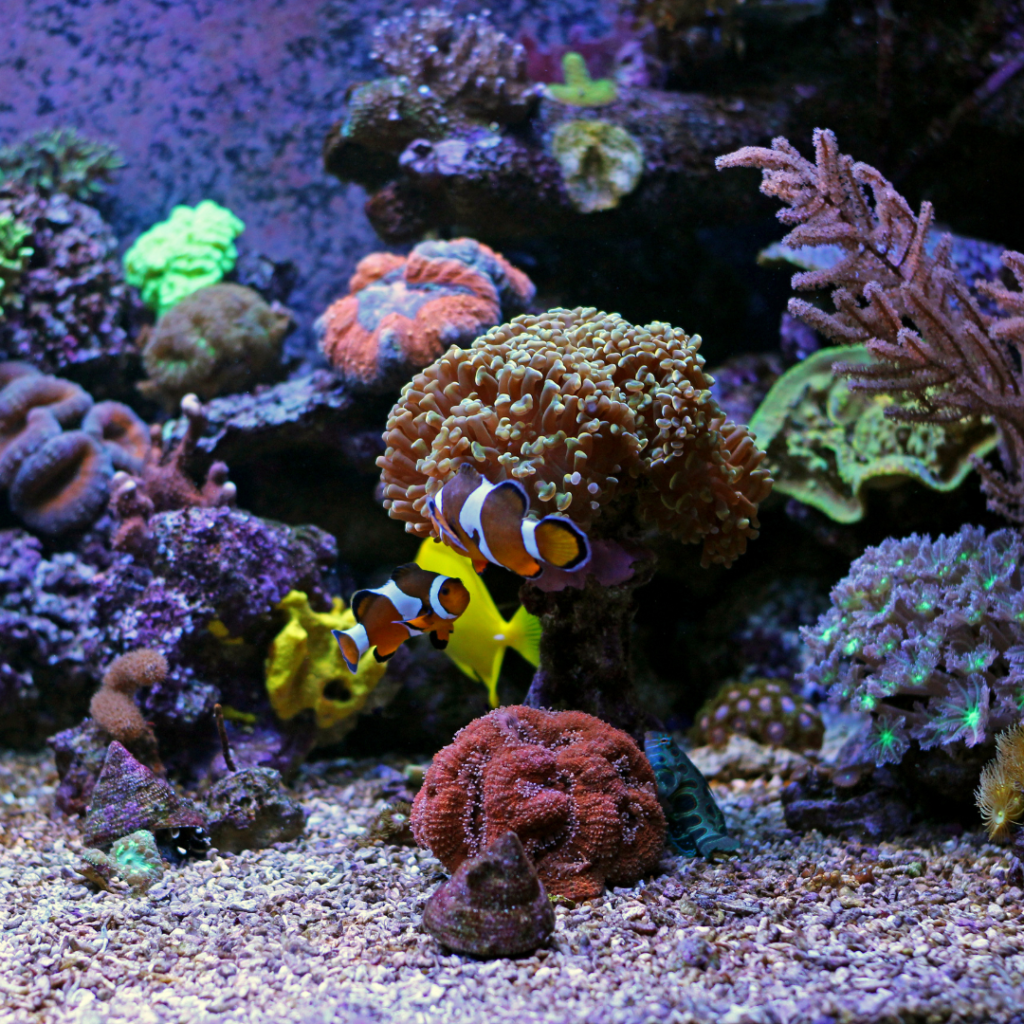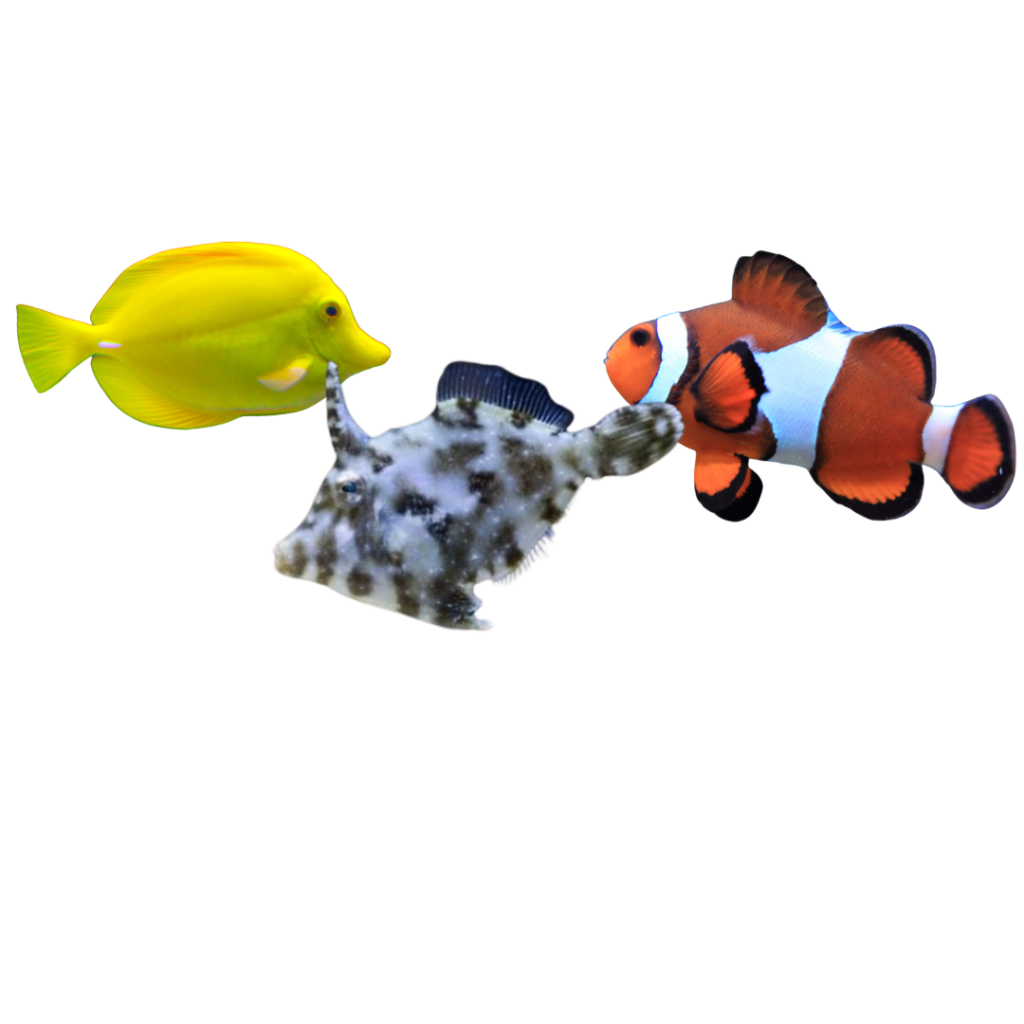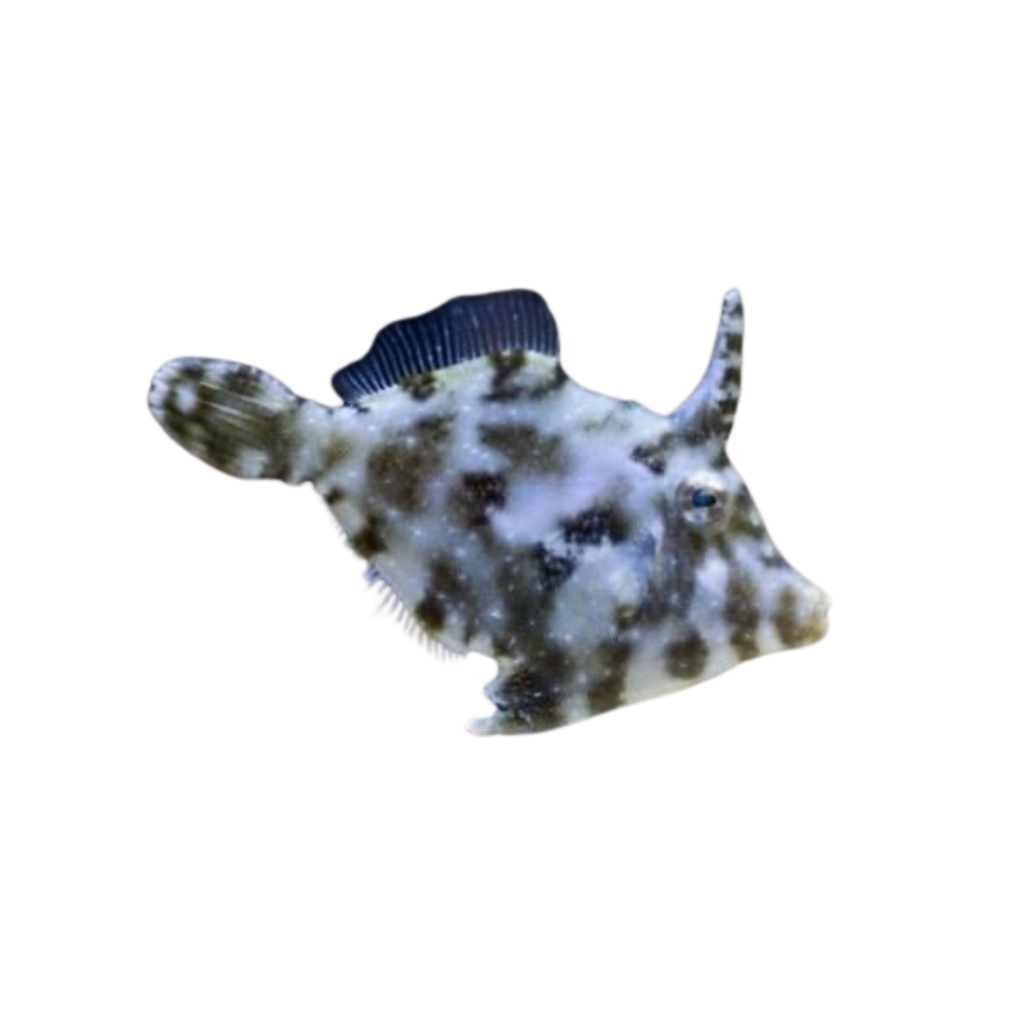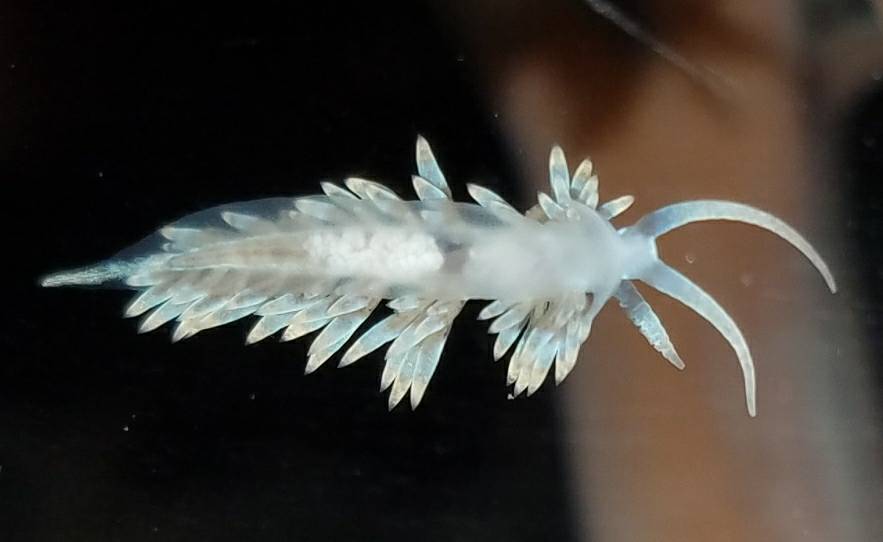Aiptasia anemones can be a nightmare for many reefers, as these pesky creatures can quickly overpopulate a tank and wreak havoc on corals and other marine life. Fortunately, there’s a natural, effective solution to this problem: the Aiptasia-eating filefish (Acreichthys tomentosus).
In this blog post, we’ll dive deep into the world of these fascinating fish and answer the most common questions reefers have about them.
What is an Aiptasia-eating filefish?
The Aiptasia-eating filefish, also known as the matted filefish or bristle-tail filefish, is a species native to the Indo-Pacific region. These fish are known for their appetite for Aiptasia anemones, making them an ideal choice for reefers looking to control these troublesome pests.
They are relatively small, reaching only 3-4 inches in length, and have a unique, flattened body shape with intricate patterns and colorations.
How do Aiptasia-eating filefish help with Aiptasia control?
The Aiptasia-eating filefish is a natural predator of Aiptasia anemones, seeking them out and devouring them with gusto. They are very efficient hunters and can effectively reduce the population of Aiptasia in a reef aquarium, providing a safer and more stable environment for your corals and other invertebrates.
Related: Berghia Nudibranch vs. Aiptasia Eating Peppermint Shrimp (Ultimate Guide)
Are Aiptasia-eating filefish reef safe?

Aiptasia-eating filefish are generally considered reef-safe, but there are some factors to consider when introducing them to a tank containing corals. While they primarily feed on Aiptasia anemones, they may occasionally nip at soft corals, LPS corals, and some polyps.
Soft Corals: Filefish may show interest in soft corals, such as mushroom corals, zoanthids, or leather corals. The risk of nipping can be minimized by providing the filefish with ample Aiptasia and a varied diet, but it’s crucial to monitor their behavior to ensure the safety of your corals.
LPS Corals: Large polyp stony corals, such as Euphyllia, Acanthastrea, or Blastomussa, may also be at risk of being nipped by the filefish. While this behavior is relatively rare, it’s essential to keep an eye on the filefish’s interactions with LPS corals and take action if necessary.
SPS Corals: Small polyp stony corals are usually safe from filefish, as these fish don’t typically target SPS corals. However, individual filefish may exhibit different behavior, so it’s always best to monitor their interactions with all corals in your tank.
To reduce the likelihood of Aiptasia-eating filefish nipping at corals, be sure to provide them with a varied diet that includes frozen mysis shrimp, brine shrimp, and other meaty foods.
Feeding them multiple times per day can also help to curb their coral-nipping behavior.
What should I feed my filefish?
In addition to Aiptasia anemones, these filefish should be offered a varied diet consisting of frozen mysis shrimp, brine shrimp, and other meaty foods. They may also accept high-quality pellet and flake foods. Feeding them multiple times per day can help to reduce the likelihood of them nipping at corals.
Can Aiptasia-eating filefish be kept with other fish and invertebrates?

Aiptasia-eating filefish are generally peaceful fish, making them suitable tankmates for a wide range of fish and invertebrates. However, there are some compatibility considerations to keep in mind when adding an Aiptasia-eating filefish to your aquarium.
Compatibility with Other Fish
Aiptasia-eating filefish can coexist with most other peaceful, reef-safe fish species. They can be housed with various species of clownfish, gobies, blennies, cardinalfish, and other community tank inhabitants. However, they may not be suitable for aquariums with very aggressive or territorial fish, as the filefish may become stressed or bullied.
It is important to note that Aiptasia-eating filefish can be territorial towards their own kind. Therefore, it’s generally best to keep only one filefish per tank unless you have a larger aquarium (100 gallons or more) with plenty of hiding spots and territory.
Related: The 19 Best Algae Eating Fish + Invertebrates for Saltwater Tanks
Compatibility with Invertebrates
While Aiptasia-eating filefish pose little threat to most invertebrates, they may not be the best choice for tanks with small ornamental shrimp, such as sexy shrimp or cleaner shrimp. These shrimp may be perceived as a food source by the filefish. On the other hand, larger shrimp species, such as the Peppermint shrimp or Coral Banded shrimp, can usually coexist with filefish without issues.
Aiptasia-eating filefish typically do well with most snails, crabs, and other invertebrates commonly found in reef tanks. However, it’s essential to monitor their behavior to ensure they don’t develop a taste for any specific invertebrate species in your aquarium.
What are the ideal tank conditions for Aiptasia-eating filefish?
Aiptasia-eating filefish prefer tanks with plenty of live rock to provide them with hiding spots and areas to hunt for Aiptasia. They thrive in typical reef aquarium conditions with temperatures between 72-78°F, a specific gravity of 1.023-1.025, and a pH of 8.1-8.4.
A well-established tank with stable water parameters is essential for the health and well-being of these fish.
Acclimation guide

It’s crucial to acclimate your new filefish slowly and carefully to minimize stress. A drip acclimation method is recommended, allowing the fish to adjust to your tank’s water parameters gradually over a period of 1-2 hours. Be patient and monitor the filefish closely during the process.
Steps to acclimate your Fish:
- Float the sealed bag containing the filefish in your aquarium for 15-20 minutes to equalize the temperature.
- Set up a drip acclimation system using air-line tubing, a bucket, and a control valve (optional) to regulate the drip rate.
- Carefully pour the fish and the water from the bag into the bucket, then start the drip at a slow rate of 2-4 drips per second.
- Allow the fish to acclimate for 1-2 hours, maintaining a slow and steady drip rate. Remove and discard excess water from the bucket if needed.
- Use a clean, aquarium-safe net to transfer the filefish to your tank, avoiding the addition of acclimation water.
- Monitor the fish closely to ensure it’s adjusting well to its new environment.
FAQ Section:
Q: Do all filefish eat Aiptasia?
A: While the Aiptasia-eating filefish (Acreichthys tomentosus) is specifically known for its appetite for Aiptasia anemones, not all filefish species share this preference. There are over 100 different species of filefish, and their diets can vary significantly. Some may eat Aiptasia on occasion, but the Aiptasia-eating filefish is the most reliable and consistent predator of these pesky anemones.
Q: How long does it take for an Aiptasia-eating filefish to rid my tank of Aiptasia?
A: The time it takes for an Aiptasia-eating filefish to eliminate Aiptasia from your tank depends on the size of your tank, the number of Aiptasia present, and the individual fish’s appetite. In general, it can take anywhere from a few days to several weeks for a filefish to significantly reduce the Aiptasia population in a tank. However, it’s essential to monitor the situation and make any necessary adjustments to ensure the health and well-being of your filefish and other tank inhabitants.
Q: Will an Aiptasia-eating filefish eat other types of pest anemones?
A: Although the Aiptasia-eating filefish is primarily known for targeting Aiptasia, it may also eat other types of pest anemones, such as Majano anemones. However, their effectiveness at controlling other anemone species can be less reliable and may vary from individual to individual.
Q: Can I keep multiple filefish in my tank?
A: It is generally best to keep only one filefish per tank, as they can be territorial and may exhibit aggression towards conspecifics. However, in larger tanks (100 gallons or more), it may be possible to keep more than one filefish if ample hiding spots and territory are provided. Be sure to monitor their behavior and compatibility closely if you decide to keep multiple filefish together.
You may also like: Best Small Saltwater Fish For a Nano Tank
Q: Are there any other natural predators of Aiptasia that I can consider for my tank?
A: Yes, there are other natural predators of Aiptasia that can be considered for your reef aquarium. These include the Peppermint Shrimp (Lysmata wurdemanni), Copperband Butterflyfish (Chelmon rostratus), and Berghia nudibranchs (Berghia stephanieae). However, each of these options has its pros and cons, and their effectiveness at controlling Aiptasia may vary. It’s essential to research and choose the best option for your specific tank setup and community.
Read More: How to Get Rid of Aiptasia Anemones



